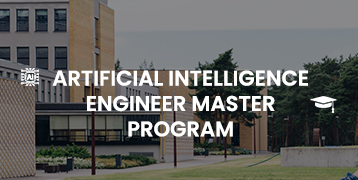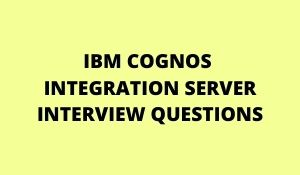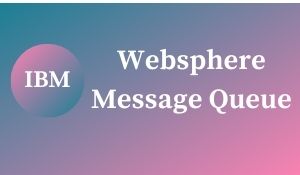
Overview of ForgeRock:
ForgeRock can be engaged as a part of the access and Identity management platform. This ForgeRock tool empowers the workforce and also offers digital identity and accessibility for consumers. The main purpose of using the ForgeRock software tool is to provide captivating and secure consumer experiences. As well as to empower an efficient and secure workforce. Protecting your connected devices and data streams is one of the important functions of the ForgeRock tool.
Here ForgeRock can provide various kinds of inheriting services like benefits of self-service, Social sign-on service, mobile authentications, secured authentication, Single-sign-on service, web devices federations, and security. ForgeRock in order to connect to the devices for multiple protocol federations, which has its own unique set of architecture devices and components that are used to keep up the case scenarios from various complex consumer needs and requirements. This tool can be used to facilitate the cloud systems of single-sign-on service and also used to provide the secured solutions of machine-to-machine. The developments which contain stateful session management, Java applications, and client-side APIs have the highest level of application in ForgeRock. These interfaces can allow policy governance and custom plugins for mobile and website applications. ForgeRock tools help everyone to interact with modern internet technologies. Many applications have been using this tool namely healthcare, retail, finance, government, social media, and communications.

Forgerock primarily provides the following product:
1. OpenAM
2. OpenIG
3. OpenIDM
4. OpenDJ
ForgeRock products are open source projects until the version of 13.0 and to do the changes according to the requirement, each product starts with Open and downloads the source code with free subscription for the naming convention. Following the 13.0 version, the products are commercial and require the paid subscription to download the source code to customize the source code. And also the product naming convention was replaced by removing the Open keyword. However we can download the software and binary file to practice in the lower environment or personally.
The new product’s name is as follows:
1. AM (Access Management)
2. IG (Identity Gateway)
3. DS (Directory Services)
4. IDM (Identity Management)
What is ForgeRock used for?
ForgeRock is a platform for any Industry. It helps out healthcare organizations significantly improve and scale identity, authority, governance, and access management with a full-suite, Artificial Intelligence directed platform built for all identities and use cases that are patients or members, employees, partners, and devices.
Why ForgeRock?
The Aforementioned ForgeRock tool empowers the workforce and also offers digital identity and accessibility for consumers. The following are the important key features of ForgeRock that explain why we need ForgeRock:
- Managing active directory objects and properties by ForgeRock tool.
- It also handles the active directory permissions.
- It can bridge each type of connectible application.
- It has Massive configuration and customization capabilities.
- Extensive workflow engines are provided.
- Manages target system permissions.
- Compliance and access system configuration.
- It gives Secured connectivity with people, devices and things.
- It also manages the active directory access.
- Controls the target system objects and properties.
ForgeRock Automation Tools
Following are the required tools that we use to automate our OpenAPM Deployments or access management:
1. Amster
It is a thin command-line interface. This tool is applicable for the DevOps processes such as identity platform and continuous integration deployment. Amster tool dwells in the access management 5.0 and is fundamentally integrated for replacing the below tools:
- AMpassword
- SSOADM
- Upgrade.jar
- Configuration.jar
2. Configuration.jar
This is the java tool that we apply to create the instances for the access management and identity platform deployment. It allows us to come upon the configure access management, configuration file, and open-access management based on the configuration file.
3. Upgrade.jar
This tool is just about the same as the Configuration.jar tool, and we will make use of it to perform configuration file upgrades.
4. REST Interface
Nearly every OpenAM configuration process can be attained through the REST interface tool. The REST interface tool stands out in the following tools:
- Rapidly logging on as the amadmin.
- Performing all the configuration changes that the system is in need of.
- Generates the interaction with script files like JSP, JSON, etc. We can make use of the API explorer for locating the REST API endpoints, in the browser’s development explorers
5. SSOADM
This is one of the important command-line configuration tools that we use in the OpenAM platforms. This tool allows us to configure every aspect of the OpenAM configuration processes when the user deploys the OpenAM identity platform. We can execute the command line batches in the configuration file by running this tool in batch modes.
Advantages of ForgeRock
The following are the principal key benefits of using ForgeRock:
1. Improving customer experiences:
Customer presumption commutes with every innovative product and new service. They demand that your organization provide them with the same digital experiences they have at other companies.
2. Digital transformation services:
A source of innovations, Digital technology changing organizations, products, and services. Enterprises are facing the challenge of undergoing a digital transformation that will bring about primarily an internal change. While external partners are considering ways to provide the end-users the optimal customer experiences.
- ForgeRock put forward a flexible deployment
- Fully transparent
- It gives Accelerated deployments.
- High availability.
- Clustering and appliance or virtual.
- It comes up with multiple modes like agents, spanning, and bridge.
- It Imparts Broad coverage
- Layouts Security and governance.

Conclusion
This blog may help a few of you to have an overview of this tool ForgeRock identity and access management features, capabilities, and framework modules. The main reasons for using ForgeRock are to provide security for your connections, devices, or systems. ForgeRock’s advanced automation tools help to upgrade your end-user business applications and also offer digital transparency for customers. This Forgerock Online Training is for Beginners, intermediates, and Experienced in Identity and Access Management. Anyone who doesn’t have prior knowledge of IAM Technology and wants to start Identity and Access Management or even anybody switching to Identity and Access Management Domain can take this Gologica’s ForgeRock Course. I hope this would assist you to enhance your skills. Happy Learning!!










